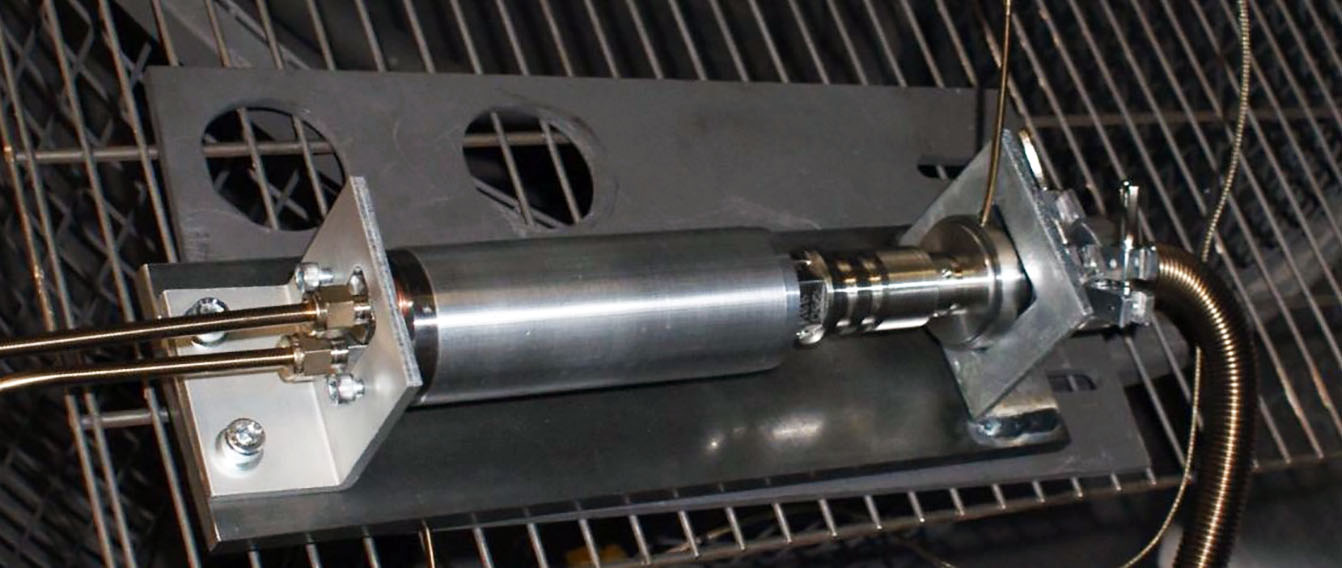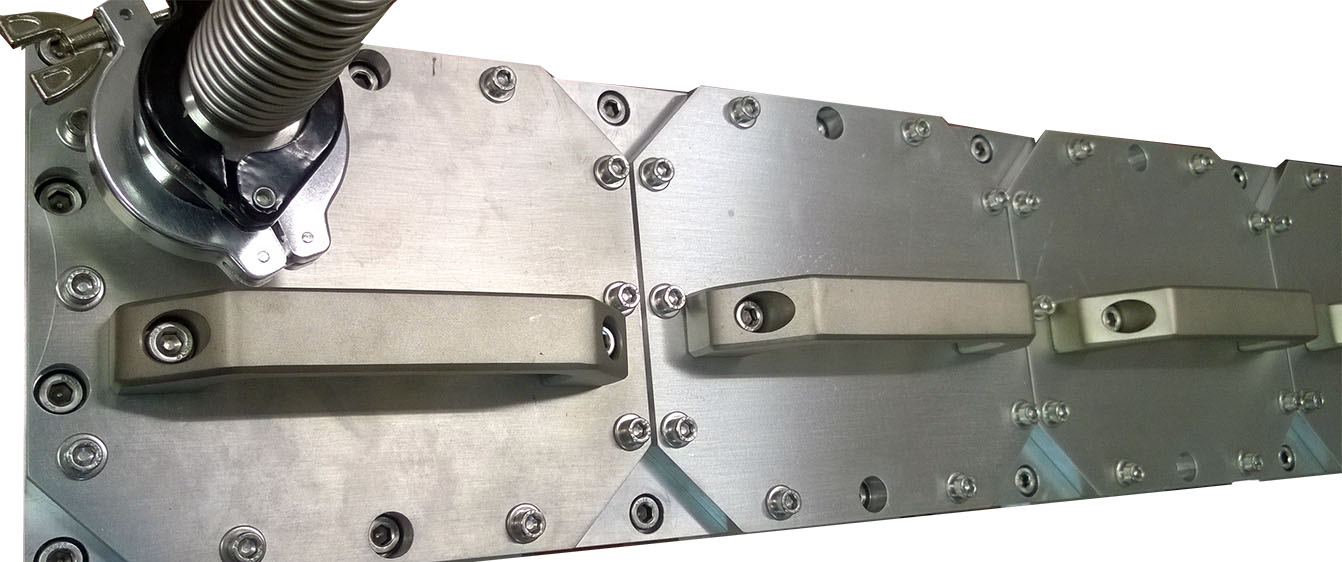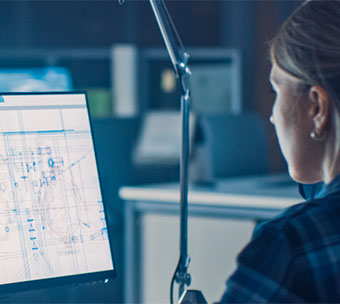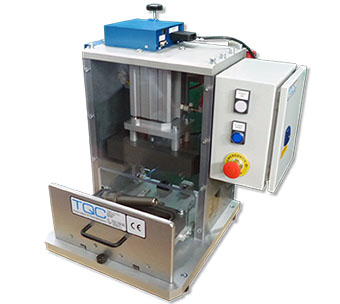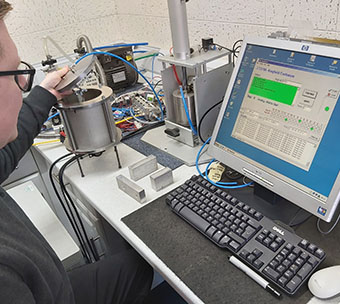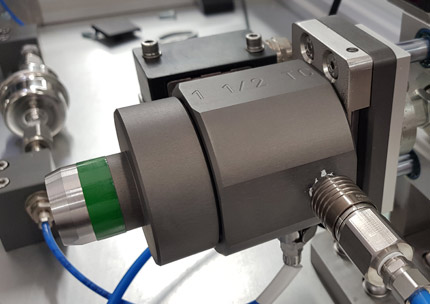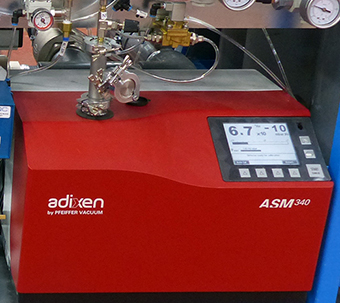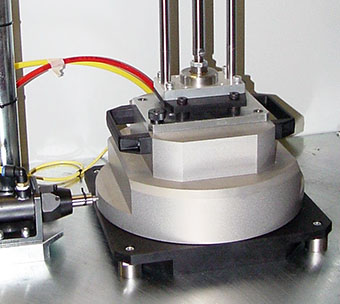There are a number of other leak test methods that have not been covered elsewhere. In other pages you will find examples of the most common techniques used in leak testing. In order that you may be aware of other potential testing techniques, here are a few examples of the range of techniques of other leak test methods that can be used, including a number of novel techniques.
Refrigerant Sniffers
There are a number of available instruments that have been tuned to detect a range of refrigerant chemicals. The units are generally used as sniffers on air conditioning assemblies, freezers, coolers systems and the like. They can be used to locate leaks. One can also use these devices to perform an accumulation test and then get quantitive results for a leakage value but this is not as common as helium or hydrogen testing.
Other tracer gases, e.g. SF6. As mentioned above helium and hydrogen are the most common tracer gases to be used. To realise the reason for this try to remember your Periodic Table, the two smallest elements are Hydrogen and Helium, this makes them the most searching gases for leak detection. Larger elements and molecules will find it more difficult to progress through a small leak path. SF6 is a gas that is used as a flame suppressant used in electrical switchgear. TQC have experience with using this gas for both leak detection and gas migration in ventilation system. However, it is an ozone depleting substance and so its use recently has become restricted. There are other gases that can be used, one just needs to find a suitable detector.
High Vacuum Leak Testing
TQC has been involved in 2 types of test using high vacuum testing. The first consists of pulling almost complete vacuum Ultra High Vacuum (by using a special high vacuum turbo pump) and looking for a detectable pressure increase.
The second is used when trying to detect the presence of liquid or moisture. It uses the physical property of liquids (and some solids) that vaporise at room temperature and very low pressure. In the case of water (or saline solution) the water will vaporise at just below 3 mbar absolute pressure. The boiling of the water and production of large amounts of vapour can be detected with special pressure transducers when plotting pressure against time as vacuum is applied to the test part in a vacuum chamber.
Water Submersal Testing, Dunking or Air Under Water testing
The classic test for finding a leak in a bicycle inner tube; pump it up then dunk it into a bucket and observe from where the bubbles are emerging. The main issues with this are that it gets the parts wet and the water must be treated or changed regularly to prevent Legionnaires and other water borne diseases. The water can also plug up the hole and you have to rely on an attentive operator so it is a subjective test. Having said all of this it is a surprisingly sensitive test (down to 1 cubic mm per second, 1×10-3 atm cc sec-1) can be achieved. It is important to realise that some bubbles may cling to the surface and not release and that bubbles can collect in areas that pocket them.
There is a variant of this test used for sealed parts; place them into a water bath and then cycle the temperature of the water bath, this should draw moisture into the part that can be detected by either observation or weighing.
Dye Penetration Testing
This uses a water additive dye, such as “Pelican Ink Test” or a UV dye. Unfortunately, this tends to be a destructive test. It is mostly used when the two parts can be separated and then observed to see where the dye reached. This is often used for the testing of blister packs in the pharmaceutical sector.
Ultrasonic Testing
As a gas flows out of a larger leak, it can generate Ultrasound. This can be detected with ultrasonic microphones. There is also a variation of this in which an ultrasound emitter is placed inside a sealed volume. Both these techniques are used to locate leakage. Ultrasound is used because it dissipates easily and quickly so it gives a good directional capability to locate the leaks.
Ultrasonic Bubble Testing
This is similar to Water Submersal Testing but in this case instead of observing the bubbles, ultrasound emitters and receivers are placed in an array above the submerged parts. Ultrasound travels easier through water than air. By detecting the echo from the bubbles, one can measure the distance to where the bubble was detected. This is similar to a sonar ping used in sub sea detection activities. If the ultrasound emitters and receivers are suitably directional, by arranging the instrumentation correctly, one can map where the bubbles are being detected. It is important to realise that some bubbles may cling to the surface and not release; and that bubbles can collect in areas that pocket them. The water might also need degassing and UV water treatment and filtration might also be needed.
Thermal Imaging Camera
Some of the latest thermal imaging cameras can be used to detect leakage. This is mostly applied to larger structures. The leaking gas may need to be higher (or lower) in temperature than the majority of the gas in the camera image. Also some gases at the same temperature also give off a different thermal signature, if the camera system is tuned to this you can see the leakage. This may be used for detecting leakage in large structures like pipelines etc.
TQC has experience in the other leak test methods described above. If you want to discuss a particular application of leak testing techniques contact us.


